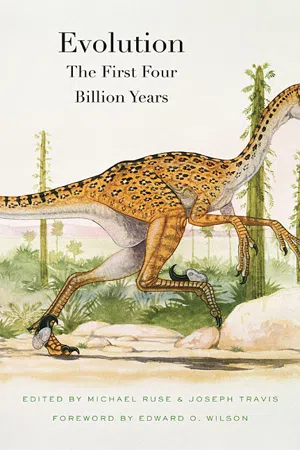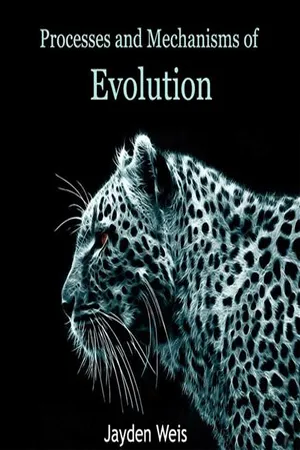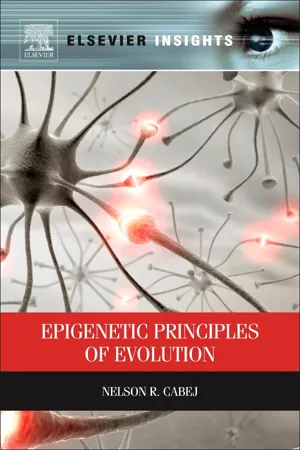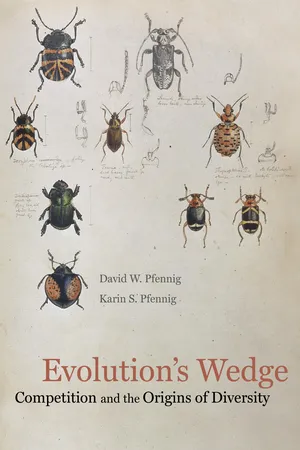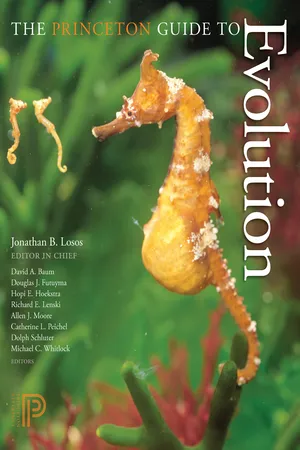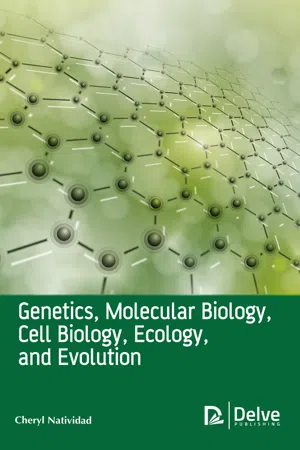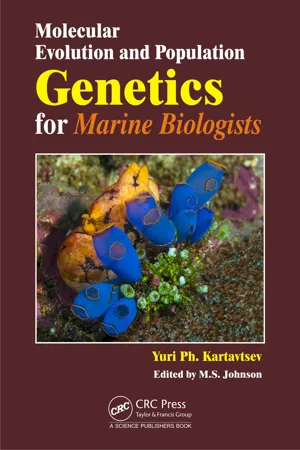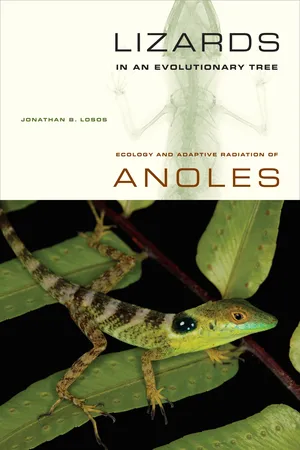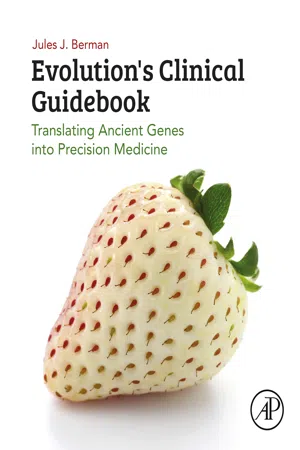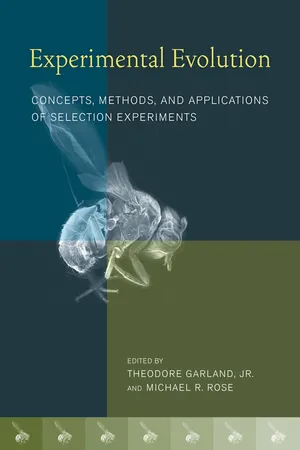Biological Sciences
Speciation
Speciation is the process by which new species evolve from existing ones. It occurs when populations of a species become reproductively isolated from each other, leading to genetic divergence and the eventual formation of distinct species. This can happen through various mechanisms such as geographic isolation, genetic mutations, or natural selection.
Written by Perlego with AI-assistance
Related key terms
1 of 5
10 Key excerpts on "Speciation"
- eBook - PDF
Evolution
The First Four Billion Years
- Michael Ruse, Joseph Travis, Michael Ruse, Joseph Travis(Authors)
- 2011(Publication Date)
- Belknap Press(Publisher)
The process of Speciation is a continuum. Initial divergence between populations is followed by a period of anagenic change within each new lineage wherein species-specific characteristics are refined by various forces of evolution. In some species long periods with little evolutionary change (stasis) may occur. Once formed, species may further diversify into new lineages (cladogenesis) or may become extinct. The challenge in the study of Speciation is uncovering where along this continuum a species actually exists. selection, genetic drift, and mutation play in promoting phenotypic and genotypic differences between populations is critical to our understanding of how and why new species arise. Our goal is not to cover every potential way in which new species are formed but rather to illustrate with examples the primary means by which new species are formed and maintain their indepen-dent evolutionary pathways. Through such studies, evolutionary biologists have begun to resolve the “mysteries of Speciation” (Bateson 1922). The Nature of Species Species concepts, a set of rules or characteristics used to define a species, abound in the literature (Mayden 1997; Table 1) and have been a subject of long-standing debate among evolutionary biologists. The nature of this prob-lem is centered around a disagreement between evolutionary biologists on pattern-oriented or process-oriented definitions, which, in turn, leads to dif-ferences of opinion on where in the Speciation process a definition is most ap-plicable (Figure 2). Pattern-oriented definitions use rules or criteria to define species. For example, the Biological Species Concept (BSC), first articulated by Theodosius Dobzhansky (1937) and later championed by Ernst Mayr (1942, 1963), defines species on the basis of reproductive isolating mecha-nisms. Reproductive isolation may occur through premating or postmating barriers to successful reproduction. - No longer available |Learn more
- (Author)
- 2014(Publication Date)
- The English Press(Publisher)
The Biological Species Concept, proposed by Ernst Mayr, in the 1942, emphasizes reproductive isolation as the basis of defining a species. The definition states: A species is defined as a population or group of populations whose members have the potential to interbreed with one another in nature and to produce viable offspring, but cannot produce viable, fertile offspring with members of other species. Mayr, a proponent of allopatric Speciation, hypothesized that adaptive genetic changes that accumulate between allopatric populations cause negative epistasis in hybrids, resulting in sterility of the offspring. If there is considerable genetic and phenotypic change without the loss of the capacity for interbreeding, then such hybridization is simply prevented by the geographical separation of populations. In this case the populations are normally regarded as subspecies. The frequency of other types of Speciation, such as sympatric Speciation, parapatric Speciation and heteropatric Speciation, is debated. Proponents of peripatric Speciation contend that small population size in the peripheral isolate (sometimes referred to as a splinter population) increases genetic drift, which can be a more powerful force than natural selection in small populations. It deconstructs complex genotypes, allowing the creation of novel gene combinations. Both forms need not be mutually exclusive. In practice, passive isolation or fragmentation as well as active dispersal seem to play a role in many cases of Speciation. Alternative Modes of Speciation Sympatric Speciation represents an alternative method of Speciation that does not require physical separation; instead Speciation occurs within a population sharing the same geographic boundaries. For example, the development of polyploidy in plant species can lead to a new species arising within the geographic range of its parent population. In parapatric Speciation there is no physical barrier to gene exchange within the population. - eBook - ePub
- Nelson R Cabej, Nelson R. Cabej(Authors)
- 2011(Publication Date)
- Elsevier(Publisher)
18. Species and Allopatric SpeciationBiological species is an evolving, but stable, group of individuals arising and held together by a sensorily determined common mating system, which isolates them reproductively from any other group of individuals. On theoretical grounds, it is plausible that geographic isolation, over time, as a result of accumulation of phenotypic (morphological, physiological, and behavioral) differences, under action of natural selection, can lead to reproductive isolation of populations and to allopatric Speciation. However, the terrestrial and aquatic environments on earth generally are too continuous to account for the evolution of many millions of extant and extinct metazoan species. The overwhelming majority of metazoan species evolved in almost barrierless continents and oceans rather than in isolated islands or lakes. Models of allopatric Speciation fail to explain why, on secondary contact, named species that are potentially capable of producing viable and fertile offspring do not interbreed and continue to exist as distinct species in sympatry.Keywords Biological species, allopatric Speciation, geographic isolation, reproductive isolation, postzygotic isolation, reinforcement model, founder effectSpecies are merely those strongly marked races or local forms which, when in contact, do not intermix.Wallace (1865)The Concept of Species
Darwin considered species to be qualitatively not different from varieties, and he used the term species for “the sake of convenience” rather than for describing a taxonomic unit:I look at the term species as one arbitrarily given, for the sake of convenience, to a set of individuals closely resembling each other, and that it does not essentially differ from the term variety, which is given to less distinct and more fluctuating forms. The term variety, again, in comparison with mere individual differences, is also applied arbitrarily, for convenience sake. - eBook - PDF
Evolution's Wedge
Competition and the Origins of Diversity
- David Pfennig, Karin Pfennig(Authors)
- 2012(Publication Date)
- University of California Press(Publisher)
As it turns out, numerous definitions of species have been proposed (Coyne and Orr 8 Speciation 180 • C H A P T E R E I G H T 2004; Wilkins 2009). The definition that we adopt here — the biological species con-cept — states that “species are groups of interbreeding natural populations that are repro-ductively isolated from other such groups” (Mayr 2001, p. 166). Put simply, under the biological species concept, populations are considered to be separate species if they do not interbreed regularly when sympatric in nature, or, if they do interbreed, they fail to produce fertile offspring. FIGURE 8.1. Two routes by which character displacement potentially promotes Speciation. Both routes begin when separate populations that have been evolving in allopatry (Time 1) contact each other (Time 2) and then undergo character displacement (Time 3). White and black birds are from different populations; character displacement is indicated by divergence in tail length, which signifies here a trait involved in reproduction. In the first route (indicated by the arrow labeled “a” and shown at Time 4), character displacement finalizes specia-tion when competitively mediated selection promotes differences between populations in traits associated with resource use or reproduction, such that individuals from separate populations no longer interbreed. In the second route (indicated by the arrows labeled “b” and also shown at Time 4), as an indirect consequence of character displacement between newly formed species (as occurs in sympatry during the first route and indicated by the arrow labeled “a”), sympatric and allopatric populations of each species also diverge. This divergence then favors the evolution of reproductive isolation between these populations. - eBook - ePub
- David A. Baum, Douglas J. Futuyma, Hopi E. Hoekstra, Richard E. Lenski, Allen J. Moore, Catherine L. Peichel, Dolph Schluter, Michael C. Whitlock, David A. Baum, Douglas J. Futuyma, Hopi E. Hoekstra, Richard E. Lenski, Allen J. Moore, Catherine L. Peichel, Dolph Schluter, Michael C. Whitlock(Authors)
- 2013(Publication Date)
- Princeton University Press(Publisher)
On the Origin of Species by Means of Natural Selection, he took the first big steps to demystifying the process. Darwin recognized that in nature there was no sharp discontinuity between the differences one sees among populations within species and the differences observed between closely related species: “I look at the term species as one arbitrarily given, for the sake of convenience, to a set of individuals closely resembling each other, and that it does not essentially differ from the term variety, which is given to less distinct and more fluctuating forms.” The origin of a species is not a sudden instant in the history of life but one that (usually) results from a steady accumulation of differences. Those differences, he explained, are the product of gradual evolution by natural selection of variation present in populations.We now recognize that Darwin’s solution was incomplete. One reason is that our concept of species has evolved. In Darwin’s day, species were designated according to the magnitude of morphological differences: “the amount of difference is one very important criterion in settling whether two forms should be ranked as species or varieties.” This means that except for the magnitudes involved, morphological criteria grouped populations into species just as species were grouped into genera, and genera into families. Under this concept, Speciation is the evolution of differences in ordinary phenotypic traits sufficiently large to warrant the taxonomic designation species. Darwin appreciated that matings between different species often produced inviable or sterile offspring, but he decided that this was not universal and was less reliable than morphological differences for classifying species.The focus of Speciation study changed with the development of the biological species concept (see chapter VI.1 ). In 1937, Theodosius Dobzhansky defined Speciation as the evolution of “isolating mechanisms,” traits that reduce gene flow between populations. Subsequently, Ernst Mayr defined species as “groups of actually or potentially interbreeding natural populations, which are reproductively isolated from other such groups.” Reproductive isolation doesn’t just mean hybrid sterility and inviability—it includes any - Cheryl Natividad(Author)
- 2019(Publication Date)
- Delve Publishing(Publisher)
ECOLOGY AND Speciation 4 CONTENTS 4.1. Levels Of Diversity .......................................................................... 260 4.2. The Formation Of New Species ....................................................... 290 Literature Cited ...................................................................................... 299 Genetics, Molecular Biology, Cell Biology, Ecology, and Evolution 260 (From: John Gould, Public domain)The term ecology comes from two Greek words, oikos which means home and logos which means understanding. It refers to the study of how organisms survive and reproduces as they interact with their environment. The environment includes the abiotic components such as the climate, soil type, altitude, etc. It also includes biotic factors which refer to other organisms (Chapman and Reiss, 1999). Another way to define ecology is that it attempts to understand the distribution and abundance of organisms (Cotgreave and Forseth, 2002). Changes in ecology has a significant role in Speciation since these can accelerate adaptive divergence of a parental species to form novel species (Orr and Smith, 1998). This chapter discusses the fundamental concepts of ecology and the process of Speciation. 4.1. LEVELS OF DIVERSITY The two general definitions of ecology, previously described, both involve the study of biodiversity . This refers to the amazing variety of organisms Ecology and Speciation 261 on Earth. This diversity is observed in terms of the form and function of organisms. Some are unicellular, while others are multicellular. These might be observed at the bottom of the ocean, at the mountain tops, and even in very hostile environments such as volcanic craters. This diversity in life is observed at different levels. For instance, diversity is observed at the species level. It can also be observed at increasing levels, i.e. population, community, and ecosystem.- Yuri Kartavtsev(Author)
- 2015(Publication Date)
- CRC Press(Publisher)
To continue discussion it is necessary to de fi ne what a species is. Species De fi ni Ɵ on A species is a biological unit, which is reproductively isolated from other units, consisting of one to several more or less stable populations of sexually reproducing individuals that occupy a certain area in nature (my de fi nition). In principal points, this is the de fi nition of the BSC. In one of the original BSC de fi nitions, “ A species is a reproductive community of populations (reproductively isolated from others) that occupies a speci fi c niche in nature ” (Mayr 1982, p. 273). We will accept the BSC for further discussion, although we will keep in mind that it is restricted mainly to bisexual organisms (Mayr 1968; Timofeev-Resovsky et al. 1977; Templeton 1998). The BSC is closest to the theory of population genetics, and that is why I prefer to use this de fi nition in this and subsequent chapters; it may be restricted, but it is closer to Genetic Aspects of Speciation 95 96 Molecular Evolution and Population Genetics for Marine Biologists the theory of population genetics than other de fi nitions. Several other species concepts, with their own advances and limitations, have been critically reviewed (King 1993; Krasilov 1977). The list of these concepts is given below. • The Linnaean Species; • Biological Species Concept; • The Biological Species Concept (BSC) (Mayr 1947; 1968); • BSC Modi fi cation II (Mayr 1982); • The Recognition Species Concept (Paterson 1978; 1985); • The Cohesion Species Concept (Templeton 1998); • Evolutionary Species Concept; • Simpson’s (1961) Evolutionary Species Concept; • Wiley’s (1981) Evolutionary Species Concept; • The Ecological Species Concept (Van Valen 1976); • The Phylogenetic Species Concept (Cracraft 1983). Fig. 7.3.1. Diagram of main modes of species origin (from Bush 1975 with permission from publisher).- eBook - PDF
Lizards in an Evolutionary Tree
Ecology and Adaptive Radiation of Anoles
- Jonathan Losos(Author)
- 2009(Publication Date)
- University of California Press(Publisher)
Another difference is geographic context; the usual scenario for reinforcement is a hybrid zone, with the two species being mostly allopatric, whereas most sympatric Speciation models envision extensive or total sympatry of the two species. idea is a fairly old one, based on the observation that populations of a species distributed across a geographic landscape experience differing selection pressures. Even in the pres-ence of gene flow, populations on opposite sides of an environmental gradient will diverge and adapt to local conditions (e.g., Schneider and Moritz, 1999; Schneider et al., 1999; Smith et al., 2001, 2005). As a result, selection may strongly favor the evolution of repro-ductive isolation (Endler, 1977; Gavrilets, 2004). This scenario is intermediate between sympatric Speciation and reinforcement. As in sympatric Speciation, the diverging pop-ulations begin with no reproductive isolation; however, the diverging populations are mostly not overlapping geographically, only being in contact at their range borders, rather than throughout their entire ranges. Like the allopatric scenario just discussed, parapatric Speciation would lead to the production of reproductively isolated species that are ecologically differentiated. How-ever, because the reason they had diverged is that populations were adapting to condi-tions that varied across an ecological gradient, the species would not coexist; rather, their ranges would abut somewhere within the environmental gradient. Subsequent sympa-try would require further evolutionary change to allow coexistence. The preceding discussion indicates that Speciation and adaptive divergence may be unrelated or intimately connected. Distinguishing these possibilities is not easy. An im-portant first step is consideration of the mechanisms by which reproductive isolation evolves. - eBook - ePub
Evolution's Clinical Guidebook
Translating Ancient Genes into Precision Medicine
- Jules J. Berman(Author)
- 2019(Publication Date)
- Academic Press(Publisher)
4Speciation
Abstract
Zoologists may be surprised to learn that there are many biologists, untrained in taxonomy, who believe that nature produces individual organisms; and that species are simply an abstraction that we use to describe groups of individuals who happen to be similar to one another. This belief is wrong. Different individuals are not assigned to a species because they are similar to one another; they are similar to one another because they belong to the same species and have all inherited the same evolved, defining features. This chapter provides a serious discussion of “species” and explains why a species should be considered a biological entity in its own right. We will learn why the modern definition of species, as an evolving gene pool, accounts for the diversity of genes, metabolic pathways, and biological compounds that are available for clinical use. The “species” concept also provides a justification for accepting viruses into the realm of living organisms.Keywords
Speciation; Natural selection; Molecular clock; Disease classification; Genetic diversity; Virocell; Species paradoxOutline- Section 4.1 A Species is a Biological Entity
- Section 4.2 The Biological Process of Speciation
- Section 4.3 The Diversity of Living Organisms
- Section 4.4 The Species Paradox
- Section 4.5 Viruses and the Meaning of Life
- Glossary
- References
Section 4.1 A Species is a Biological Entity
The purpose of narrative is to present us with complexity and ambiguity. Scott TurowIt has been argued that nature produces individuals, not species; the concept of species being a mere figment of the human imagination, created for the convenience of taxonomists who need to group similar organisms. This view is anathema to classic taxonomists, who have long held that a species is a natural unit of biological life and that the nature of each species is revealed through the intellectual process of building a consistent taxonomy [1] - eBook - PDF
Experimental Evolution
Concepts, Methods, and Applications of Selection Experiments
- Theodore Garland, Michael R. Rose, Theodore Garland, Michael R. Rose(Authors)
- 2009(Publication Date)
- University of California Press(Publisher)
Hence, understanding the origin of reproductive isolation is necessary for un-derstanding the origin and maintenance of biological diversity. Laboratory experiments on Speciation investigate the conditions under which reproductive isolation can evolve between members of what was initially a single, interbreeding population, as well as the conditions under which reproductive isolation between initially partly reproductively isolated populations can become intensified. The organization of the chapter is as follows. The next section defines terms used in the Speciation literature (mostly following Coyne and Orr 2004) and, in so doing, gives an overview of the questions that have been, or could be, addressed by experimental evo-lution approaches. The second section summarizes the main conclusions from past lab-oratory experiments on Speciation. (I will not address the interesting recent experiments of Rieseberg et al. 1996 and Greig et al. 2002 on homoploid hybrid Speciation, a rela-tively specialized mode of Speciation.) The third section suggests questions that have been mostly neglected in past experiments, but which are ripe for further investigation. Finally, the fourth section gives some general guidelines for future laboratory experi-ments on Speciation. This chapter will focus exclusively on sexually reproducing eukaryotes—that is, those with meiosis and syngamy at some stage of the life cycle. Asexual lineages are automati-cally reproductively isolated except for occasional horizontal gene transfer (HGT) events. Although bacterial and archaeal lineages form clusters within which HGT occurs rela-tively easily, but between which HGT rarely occurs (Lawrence 2002), the evolution of such clusters has not, to my knowledge, been investigated experimentally.
Index pages curate the most relevant extracts from our library of academic textbooks. They’ve been created using an in-house natural language model (NLM), each adding context and meaning to key research topics.
